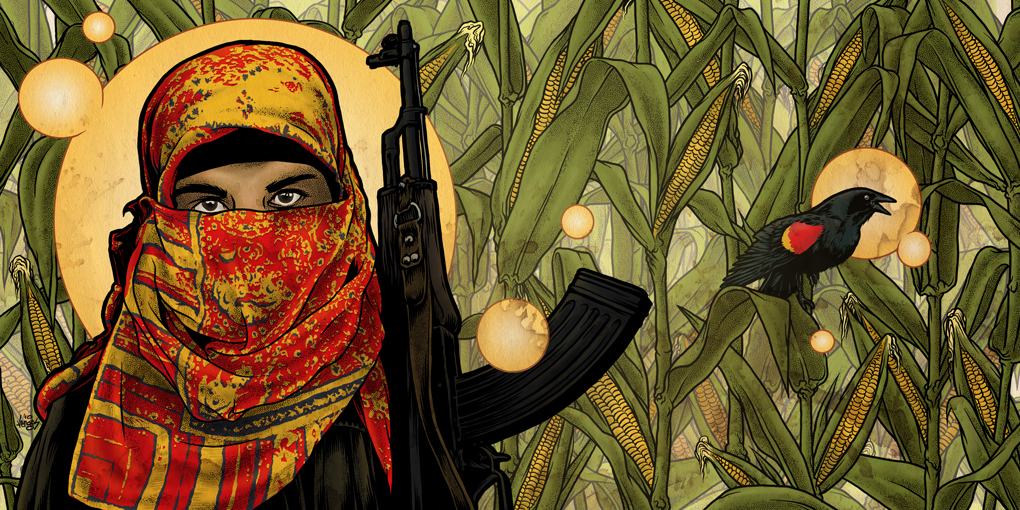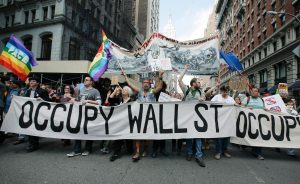
The importance of an open, free and fair internet in fighting for a true democracy.
by Natasha Horn
We have seen a change in protests from the days of the civil rights movement of the 60s. Today, protests are digitally enhanced with activists able to connect instantly across geographical borders, sharing images and stories of injustices and easily rallying global masses to a cause. The Zapatistas have been termed the ‘first information social movement’ (Edwards,2014,169) due to their use of the internet to spread their message, and today technological developments aid activists in a multiplicity of ways as seen with Occupy Wall Street. But with news of the removal of Net Neutrality in the US, questions have been raised whether this is an attempt at internet censorship and if so, whether this will have a detrimental effect on our online political freedoms.
Deemed the ‘first informational social movement’, the Zapatistas were an indigenous Mexican group who rebelled against the North American Free Trade Agreement (and the general effects of undemocratic globalisation) which had led to plans for their communal lands to be sold for commercial purposes (Edwards,2014,169-170). Their rebellion was a reaction to the environmental, local and economic problems which had arisen in their country and the rest of the global south as a result of corporations valuing business over people (Edwards,2014,162). The Zapatista’s guerrilla army took control of a series of towns in Chiapas (a state in Mexico) in response to the government plans. The towns were run autonomously and democratically, everyone had a say in decision-making. This collective and truly democratic way of decision-making during protests has further inspired other groups like the occupy movement.
What distinguished the Zapatistas from previous movements was how they made use of social media to create their own narrative. Whilst the Mexican government aimed to quell the movement using mass media to limit and distort news about the uprising, the Zapatistas were able to use social media to spread news of its struggle globally and escape censorship. As a result, activists from the global North were alerted to their case and set up the people’s global action, which provided a communications channel to coordinate future global protests in the north and south (Edwards,2014,169). However, it has been questioned whether the use of the internet was that integral to the Zapatista movement since most members of the Zapatista communities were very poor and therefore cut off from both the internet and telephone communications. It is clear that the organisation of the movement was not dependent on such a limited resource. However, the use of the internet in the Zapatista movement was instrumental to the movement gaining international recognition and to the setting up the global justice movement to unite the social movements of the global north and south (Edwards,2014,169-170).

Occupy Wall Street
This initial use of the internet to organise, coordinate and spread protest has since evolved. We are now seeing different uses of the web during protests. The Occupy Wall Street of 2011 provides a good example of how social media can be used to benefit activists, as Castell notes ‘[…]the movement was born on the internet, diffused by the internet and maintained its presence on the internet.’ (2012,168). Occupy Wall Street was a response to both social media-fuelled protests in Tunisia and Egypt and the recent financial crisis (of 2007-8), in which big bank managers were bailed out using government tax money. A call was made in July 2011 on the Adbusters blog for people to Occupy Wall Street (from September 17th), with aims to restore democracy by calling for a politics independent from the power of the corporate multinational companies (Castells,212,159-160).
The reason the Occupy movement was so successful, with anywhere between 750-2500 sites being occupied globally from L.A to Seoul (DeLuca, Lawson& Sun,2012,484), was largely due to their use of social media. Despite the fact there were media blackouts and negative depictions of the Occupy movement in the mass media, social media and blogs were useful in framing the situation in the Occupy movements favour (DeLuca, Lawson& Sun,2012,488), thus challenging the negative representations of the activists as delinquents in the mass media, and restructuring their own image via YouTube, Tumblr and Twitter. Through YouTube, the occupiers were able to share images of police repression, which helped to rally people across the globe to the cause. Twitter helped the activists to communicate between the camps, plan specific movements, and it further rallied the cause globally. It is estimated that on a typical day in November 2011, 120,000 tweets were made referring to Occupy, this number peaked during key events of the movement in New York (Castells,2012,171). Some larger occupations had their own websites, which they used to collect donations for the occupiers, to spread their message as well as information on how to get involved, plus they uploaded documents explaining how to occupy and deal with the police (Castells,2012,174). These social media provisions were integral to the Occupy movement’s organisation, scale, and success.
Whilst it is clear that in the digital age the free use of social media is instrumental in the fight against global oppression and censorship, there are threats to such freedoms. In the past, governments like Egypt in 2011 shut down the internet to eliminate Facebook which was being used to announce the time of anti-governmental rallies during the Arab springs. This was a clear violation of freedom of speech, and more recent violations have since occurred. The changes in net neutrality laws in the US have been argued to pose a serious threat to our internet freedom of speech and political expression. Net neutrality keeps the internet open free and fair, under this law once the user has paid for their internet plan the provider gets no influence on what the user consumes and can access. However, in December 2017 votes were made in the FCC to overturn net neutrality regulations, meaning internet providers can now slow down website content for any reason, be it commercial (the website doesn’t pay them in return for fast service) or ideological (they disagree with the website’s political views). In a world where an internet provider can alter your ability and inclination to view certain messages online, your freedom of choice is decreased. This is an example of neo-liberalism at work since even the freedoms of the internet are being threatened in exchange for corporate profit.
Social media and the internet are crucial to the spread of information and the ability to form protests opposing oppression and injustice, therefore we must push for a free, fair and equal online space in order to continue in our fight for a true democracy now.
Offline references
Castells, M. 2012. Networks of outrage and hope social movements in the Internet age. Cambridge: Polity Press.
DeLuca, K& Lawson, S & Sun, Y. 2012. ‘Occupy Wall Street on the Public Screens of Social Media: The Many Framings of the Birth of a Protest Movement’. Communication, Culture & Critique, 5: 483-509.
Edwards, G. 2014. Social movements protest. Cambridge: Cambridge University Press.

0 Comments